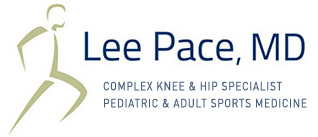What is Distal Femoral Osteotomy?
An osteotomy is a surgical procedure that involves cutting of bone. The distal femur is part of the femur (thighbone) just above the knee joint. Distal femoral osteotomy is performed to correct knee alignment which can lead to patellar instability or excessive loading and degeneration of one side of the knee joint. The procedure involves cutting of the distal femur, repositioning the bones and securing them in the proper alignment.
Indications for Distal Femur Osteotomy
- Genu valgums: This is a ”knock knee” alignment that can result in pain, abnormal gait or patellar instability. Further, the lateral compartment of the knee joint can degenerate quicker in the setting of meniscus deficiency if the knee is in a valgus alignment.
- Femoral anteversion: This is when someone is significantly “pigeon-toed”. This can lead to an abnormal gait or patellar instability.
During a distal femoral osteotomy, the femur is properly realigned and fixed with rigid implants.





